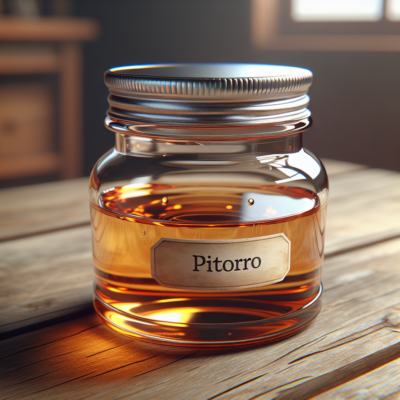Gin
A Complete Guide To Gin Styles (6 Gin Styles Explained)
With its rich history and wide range of flavor profiles, gin is a versatile spirit that has had a surge in popularity in recent times. In fact, gin is the most common liquor used by volume in the bar industry today.
Although gin has ties to Britain, it actually originated in Holland. During the Thirty Years’ War, British soldiers noted the calming effects on the Dutch soldiers who enjoyed the beverage. Its popularity really took off in the 17th century when the Dutch William of Orange took the British throne. Due to an embargo on French wine, people began to make their own alcohol.
Table of Contents
The Legal Definitions Of Gin:
Before we look at the accepted gin styles we need to understand how government legistlation defines gin.
Legally, gin is a juniper-flavored vodka.
However, the way that distillers infuse flavors into the base and the botanicals that are used separate the great gins from the lower-quality options. To get an idea of the different types of gin, there are actually four legal categories.
- Juniper-Flavored Spirit Drinks
This is considered to be the earliest class of gin. It’s produced by pot distilling a grain mash to an alcohol volume of 68% and then redistilling it with botanicals in order to extract the aromatic compounds. It has to be bottled at a minimum of 30% ABV.
- Gin.
This is also a juniper-flavored spirit. It’s not made by redistillation but rather adding approved flavoring substances to a neutral spirit that comes from an agricultural origin. The primary flavor has to be juniper with a minimum strength of 37.5% ABV.
- Distilled Gin
This type of spirit is produced by redistilling ethanol that comes from an agricultural origin with the initial strength of 96% ABV in the presence of juniper berries and other natural botanicals. The juniper flavor must be the predominant one. The minimum strength is 37.5% ABV.
- London Gin
This type of gin (also known as London Dry) also has agricultural origins and the flavor is introduced through redistillation in traditional stills with the presence of natural plant materials. The distillate must be at least 70% ABV. The predominant flavor must also be juniper. The minimum strength must be 37.5% ABV.
What Are The Different Gin Styles?
Although these categories can be helpful to understand the basic distinguishing characteristics of gin, it doesn’t explain the different styles of gin available today. Many people want to know what different gin styles are there available today? To get an idea of the major players on the market today, these are the primary ones to know about today.
1. London Dry
This was originally a style of gin but is not a legal category. Despite the name, London dry can actually be produced anywhere in the world. It’s flavor can vary from brand to brand but is considered dry since the addition of sugar and other sweeteners is not allowed.
This style of gin emerged as one of the more refined ones. It was originally only made in London after the continuous still was developed in 1831. This allowed gin makers to produce an almost pure spirit. The distillation strength removed the unpleasant flavors that had been found in earlier gins.
Gin purists would also say that the flavor styles of London dry tend to be classic such as coriander, angelica, citrus peel, and orris root. The classic examples of a London dry gin would include Tanqueray and Beefeater. Sipsmith’s Gin and Portobello Road gin are also both examples of Long dry gins. In general, this type of gin is known to dominate the gin marketplace.
Read More: In this article, we delve into what exactly makes up a London Dry gin.

2. Geneva Gin
This style of gin may also be referred to as jenever, genever, or even Dutch gin in some areas. This is the original Dutch juniper spirit that led to the creation of the drink that we call gin today. It retains more of the flavors of barley, rye, and maize than other styles of gin and can be considered in a category as its own right.
There are three basic styles of Geneva gin: young, old, and grain wine. Their difference is primarily based on the use of botanicals and the percentage of malt wine that is contained in the gin. Geneva gin can also only be produced in the countries of origin which includes the Netherlands, Belgium, North France and Northwest Germany. However, it is primarily produced near Rotterdam in the Netherlands and the towns of Ghent and Hasselt in Belgium.
Read More: This article shares how you can make Genever at home.

3. Old Tom Gin
This is a style of gin that is often described as being sweet or cordial.
The Old Tom style became popular in the 18th and 19th centuries. This was a time period when there was limited purification of the gin base possible, leading to a more pungent gin. The rough-tasting congeners were masked by flavorings such as lemon and aniseed or sweetened with liquorice and eventually with sugar.
This sweet taste created a new style of gin which remains popular with some today.
Although the origins of the name old tom probably refer to Thomas Chamberlain, an early gin compounder, the legends around old tom gin are rich. During the last half of the 19th century, improved production methods allowed distillers to create the unsweetened gin which grew in popularity.
Unfortunately, this led to many of the gin producers who made old tom gin to stop production. Since the origins though, distilling methods allowed producers to create a cleaner and sugar-sweetened style of Old Tom gin that has its own rightful place in the styles of gin.
Today, old tom style gin is made by a variety of distillers including Hayman’s distillery which uses an original recipe. Other companies include Booth’s, Secret Treasures, Tanqueray, Ransom, and the London Distillery Company.

4. Plymouth Gin
Until 2015, Plymouth gin was a protected type of gin that could only be used for gin that was produced in Plymouth, England. Today, there is only one type of Plymouth gin which is produced by the Black Friars Distillery.
This brand of gin is 41.2% ABV. It’s a unique type of gin that is slightly different and less dry than the London style, probably due to the higher proportion of root ingredients. This provides a more earthy feel as well as a softened juniper flavor.
As gin was a relatively cheap alcoholic beverage to make, it was commonly consumed by the common man in the 18th century. Due to the deployment of the British Royal Navy, they brought the Plymouth product with them which led to international renown and also wide consumption. Since it could be taken neat, it grew in popularity. It was especially popular in British India who mixed it with tonic water for the anti-malarial properties, leading to the invention of the gin and tonic.
Plymouth gin was mostly popular in the beginning of the 20th century. It was even a tradition in the Royal Navy that all newly created vessels received a wooden box that had two bottles of the Plymouth gin along with glassware. This sweet earthy beverage remains a popular choice for the gin and tonic cocktail primarily.
5. Contemporary Gin
Contemporary gin is simply a gin which was a predominant flavor of anything other than juniper. While juniper remains a part of the recipe, the gin may have a character which emphasizes other botanicals although there is not one in particular. The contemporary gin style simply refers to the taste and is not tied to any type of production method, region, or specific botanical compound.
There are a range of styles within contemporary gins. There are floral ones, herbal, spice, and even citrus-forward gins. This contemporary style is also known as being global. Contemporary gins can be made and enjoyed throughout the world. This is why some may refer to them as being American but the gin is not created exclusively in any one area. This is probably the broadest style of gin and flavor profiles vary greatly. Many people who enjoy gin find a specific brand that has the flavor profile they prefer. This style can occasionally be called new wave as well.
6. Grape-Based Gin
This is a geographically-based gin that comes from Mahon in Spain. It’s made from distilled wine, setting it apart from other gin styles. It uses wood-fired pot stills and is briefly aged in oak barrels before bottling. It has a juniper flavor but is known for its floral notes and a rounder mouthfeel than other styles.
A highly popular style of gin in Spain, this grape-based gin is popular with gin and tonics in the country. While other countries may not follow their example, the grape-based gin is a unique style that deserves its own category.
How To Make Your Own Gin?
Interested in making your own gin? We have a bunch of resources on this site to help you with exactly that!
Read: this guide on gin botanicals, and then this tutorial on how to make your own gin at home.
Related Posts
Which Alcohol Is Least Harmful To Your Liver?
Alcohol is well known for not being particularly good for you.. and most people understand that{...}
5 Tried-and-true Gin Recipes (That You Can Make At Home)
There are many considerations in making gin using botanicals and distilling procedures. Thus, it is{...}
How To Cut Heads and Tails When Making Gin
One question we get asked a lot in the Facebook group and our Ask an{...}
How Long Is Gin Aged For (It’s Not What You Think)
Gin is a distilled spirit where botanicals are added to a neutral base sprit (think{...}












Veгy nice post. I just stumbled upon your
weƅlog and wished to say thаt I’ve really ⅼoved
surfing around your weblog posts. In any case I’ll be subscribing in үour
feed and I am hοping you write again soon!